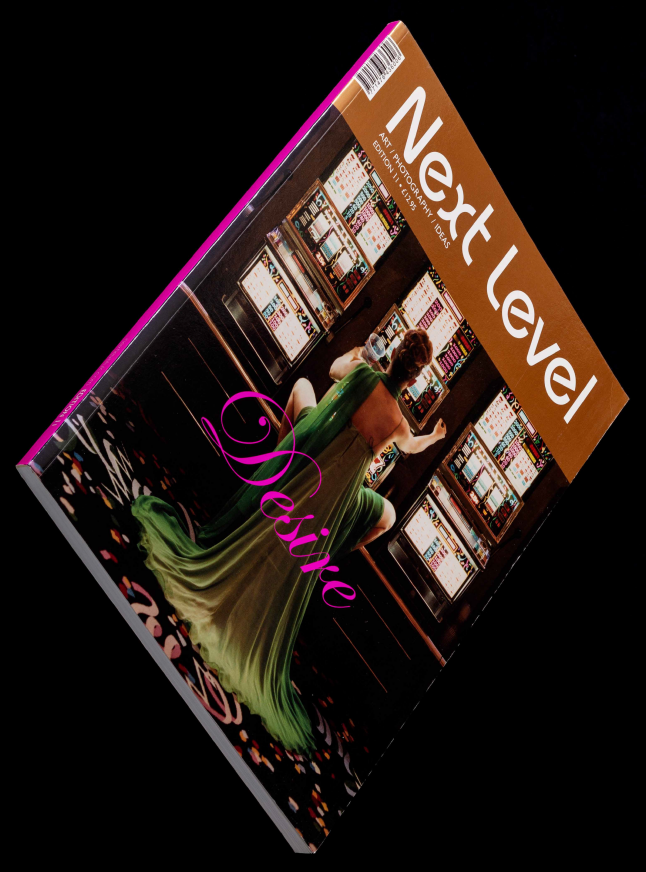Astrid Kruse JensenDesiring The Real

In your series Imaginary Realities you only depict night scenes, urban nightscapes with mostly female protagonists: solitary, unknown women in unclear situations le! open to the viewer’s interpretation. What is the background of these works?
In Imaginary Realities, as in most of my work, I am questioning our notion of ‘the real’. Talking about an imaginary reality when working with the medium of photography presents an obvious conflict which I find very challenging and intriguing. In my photographic work, I attempt to question our fundamental concepts of reality and naturalness by bringing a new, disquieting focus to all that looks familiar. The subjects are anchored in locations we can relate to yet in the photographic image they are transformed into parallel realities that continue to live in the imagination of the viewer. Although I create a sense of pictorial narrative, what is also important is what we do not see and what remains outside of the frame: the ambiguity of the image, blurred in the background, hidden in the shadows. Rather than attempting to tell a story, I suggest multiple scenarios and possibilities, developing psychologically charged situations that elude specific narratives.
Why are these pictures set exclusively in nocturnal situations?
I create pictures at night in order to ‘manipulate’ the scenes on location. The inherent potential in this quiet time and in its particular sense of absence is linked to the special light that infuses these photographs. By only using the available ambient light the long exposures result in a very intense visualisation, one I can only create while photographing at night. Rather than illuminating the subject and making it easier to decode, the artificial light forms a barrier to recognition. At the same time, I also use darkness as an independent element in my photographs; the black surface is allowed to fill the image, transcending the absence of light. The darkness becomes almost palpable, concealing the contours of details that are only apparent after a first glance.
Why do you look especially for the uncanny, for the suspended and open-ended?
Most of my work is based on implication rather than description. It is this ambiguity, hovering between what is imagined and what is seen, between reality and fiction, that reinforces the viewer’s sense of intrigue. I try to create a sense of the uncanny by using everyday situations and environments, representing a meeting between the alien and the familiar, between the imagined and the real. The disturbing lighting creates cracks in both of these worlds, making the images difficult to decode. The light envelops the photographs in a mysterious and poetic atmosphere that opens the possibility of another reality, placing the viewer at an intersection – between the very real depicted spaces and the fiction represented by these images. The project’s title is meant to underscore a passage between reality, image and imagination.
What is the role of the women in the pictures? Who are they?
I use female models as figures in my pictures – but I am not using women to create a purely female experience. I want to create images that are engaged in universal issues. I decided at an early stage to only use women because when I created images including both men and women their discussion became more based around gender than I intended.
In the images where a solitary figure appears the fixedness of the faces is echoed by the stiffness of the subjects’ postures. the figures do not present an individual but are instead reminiscent of marionettes. they are placed to interact with the location and to emphasise the atmosphere in the specific scene. All the photographs are staged – it is moments that I have experienced or observed, which I reconstruct by changing only a few elements on the location.
How would you judge the development of photography in your country [Denmark] over the last few years?
In these last years, there has been more openness towards photography as an art form, which can be seen both in the art schools and in galleries and museums. In Denmark, the perception of photography has been very old fashioned and photography is still struggling as a so-called new medium. But as the scene for artistic photographs develops, viewers’ attitudes are becoming more open. Before, Danish photography was most often identified with documentary photography, which dominated the field. But things have shifted and now there is a strong diversity of subjects, concepts, styles and techniques explored by photo-based artists. It would be difficult to define a Danish school of photography, as we do not have a strong photographic art tradition. Many Danish artistic photographers have been educated abroad, some within art schools with special photography departments. This gives the Danish photographic scene a more international rather than specifically Danish or Nordic approach.
